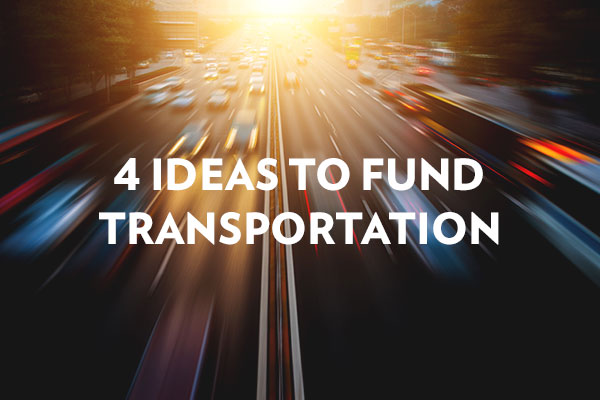Anyone who has ever driven on Pennsylvania’s roads knows this state is filled with structurally deficient bridges—3,770 to be exact—and that the skill of artfully swerving around potholes is essential to not destroying your car.
And anyone who has ever lived in Pennsylvania knows that for every mile of crumbling infrastructure, there’s an equal amount of political argument over how to address it. Yet, despite the constant clamor, the state has failed to improve the roads.
In 2013, lawmakers thought they had found the answer: higher taxes. They passed Act 89, which raised the Oil Company Franchise Tax (OCFT), moving Pennsylvania from the 15th highest to the second-highest gasoline tax rate in the nation. Today, Pennsylvania drivers pay 58.7 cents a gallon in taxes and fees.
Unfortunately, gobbling up more of Pennsylvanian’s money hasn’t solved the problem. The American Society of Civil Engineers gave Pennsylvania’s infrastructure a C– in both 2014 and four years later in 2018. According to a 2018 report from 24/7 Wall St, Pennsylvania comes in fourth for the worst infrastructure while being the ninth highest spender—$773 per licensed driver.
Six years have passed since that “solution” was concocted, but it seems no lesson has been learned from its failure. Governor Wolf’s Restore PA plan included $4.5 billion in debt-financed spending. Additionally, the 2019 Pennsylvania House Transportation Infrastructure Task Force Report listed 30 ideas for new/increased taxes and fees to pay for infrastructure.
Thankfully, the report at least acknowledged the existence of a root cause of the state’s infrastructure woes: transfer payments. Over time, state lawmakers have diverted funds from one agency to the next like a driver swerving around potholes, causing infrastructure money to be spent on non-infrastructure expenses. The most notable being the misappropriation of Pennsylvania’s existing roadway funding to pay for the state police and mass transit.
All transportation funding should follow one simple principle: individuals should pay for the services they use. Drivers shouldn’t pay for mass transit or state police services and turnpike drivers shouldn’t pay for PennDot bridge reconstruction. Stopping transfers overnight will only result in budget holes. However, the following solutions offer paths forward to gradually reduce fund transfers while still providing funding for essential services
- Repeal the Prevailing Wage. The “prevailing wage” is an artificially inflated wage that applies to all public works projects over $25,000. One example is Stroudsburg University where workers were paid 25–64% more than the average wage for their professions on the private market. Eliminating or capping the project costs that require the prevailing wage would help to make existing funds go further.
- Tap the Shadow Budget. The shadow budget is a series of funds outside the General Fund, which are responsible for increasingly large portions of state spending. With the exclusion of SERS and PSERS retirement accounts, the total balances equal $14 billion. At least a portion of these funds could be used to pay down the estimated $5.5 billion needed for infrastructure repairs.
- Municipal Fee For Service. From 2013–2016, the Pennsylvania Department of Transportation (PennDot) lost out on $876 million as a result of the transfers to the state police. In 2016, the state’s fiscal code was amended to gradually reduce these payments and eventually cap them at $500 million—still a sizeable payment. The taskforce report suggested a fee for use plan—which ranges between $8–166 per capita, and has also been suggested by Governor Wolf—as well as having municipalities pull resources to create regional police forces. Either of these options could reduce the infrastructure diversion.
- Pay for Mass Transit Use. Just like those relying on the police force should be the ones paying for it, those using public transportation should be funding it. Mass transit siphoned off 22% of PennDot’s budget in 2018, which amounted to roughly $2 billion. While the state could continue to subsidize low-income users, drivers shouldn’t be subsidizing the whole system.
- Private-public partnerships (P3). Pennsylvania’s Rapid Bridge Replacement plan is one example of a successful P3. This project focused on bridges that were similar in order to streamline the design and building process. Allowing private companies to handle aspects in repairs in the future and replicate this project’s success.
While there is more than one way to address the state’s infrastructure, two things are certain: higher taxes do not work and allowing the state’s roads and bridges to continue to crumble is not an option.
RELATED : TAXES & SPENDING, PENNSYLVANIA STATE BUDGET, TRANSPORTATION





